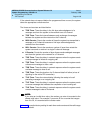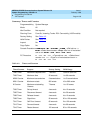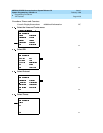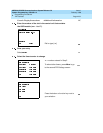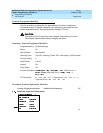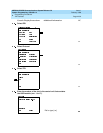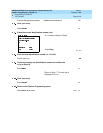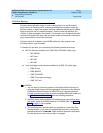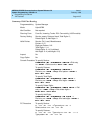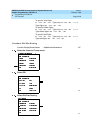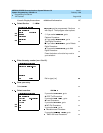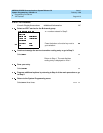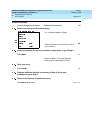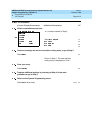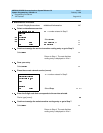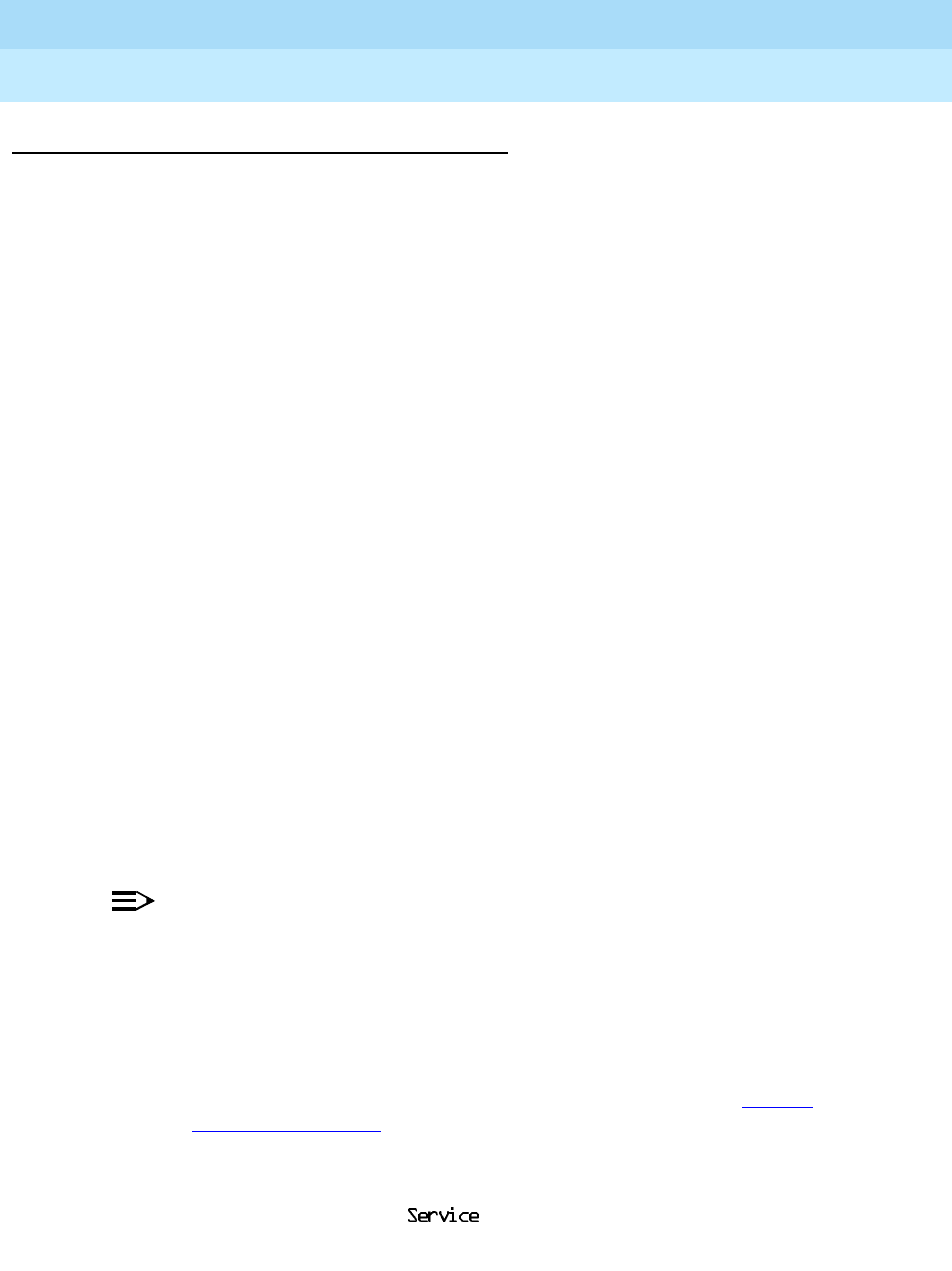
MERLIN LEGEND Communications System Release 6.0
System Programming
555-660-111
Issue 1
February 1998
Programming Procedures
Page 4-206PRI Facilities
4
Dial Plan Routing 4
Dial plan routing provides a way to route incoming calls on a “per B-channel
group” basis. An incoming call is routed by matching the incoming number (by
service, number of digits, and pattern) and then optionally deleting and/or adding
digits to direct the call to a specific endpoint. A service must be specified; the
number of digits and pattern are optional. For example, you can specify that calls
received from a particular area code should be routed to the specific individual or
group responsible for accounts in that area.
Dial plan routing is available in Hybrid/PBX mode only. Key systems route
incoming calls on a per-line basis.
In Release 4.2 and later, you can specify the following additional services:
■ MCI Toll Services available for a DMS-250 or DEX600E switch type:
—MCI PRISM
— MCI Vnet
— MCI 800
— MCI 900
■ Local exchange carrier services available for a DMS-100 switch type:
—DMS Private
—DMS INWATS
—DMS OUTWATS
— DMS FX (foreign exchange)
— DMS Tie Trunk
NOTES:
1. You can enter a service not shown on the Network Service screen by
using the 5-digit binary code that represents the service in the Network
Facilities Information Element of ISDN PRI layer 3 signaling protocol.
Contact your service provider for more information about the codes and
see “Miscellaneous Procedure” within the following procedure.
2. Dial plan routing does not affect PRI tandem trunks connected to slots
with switch types of LEGEND-Network or LEGEND-PBX. See “Switch
Type” on page 4–166 for details.
3. You must program a service before you program any other Dial Plan
Routing function. If you have not programmed a service, complete the
procedure below for the
option and then repeat the procedure
for each optional function that you want to program.



